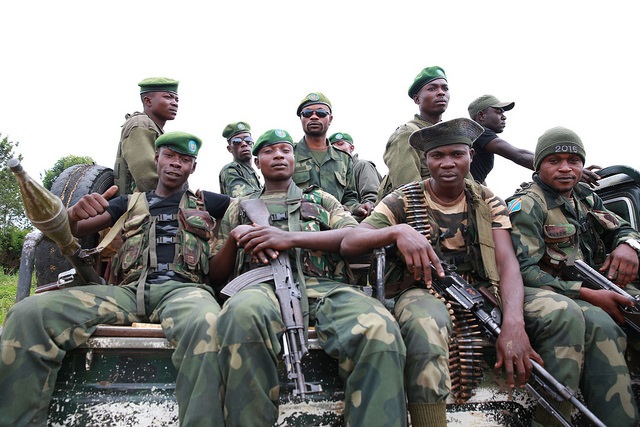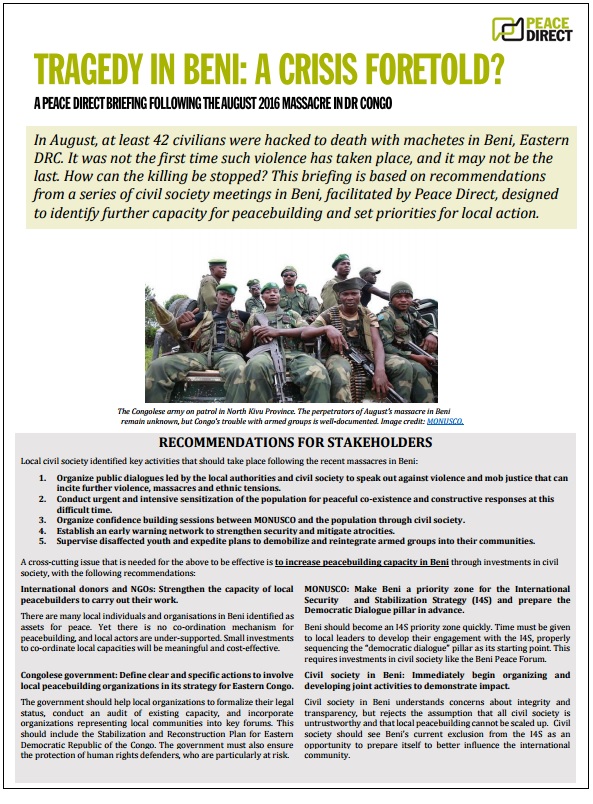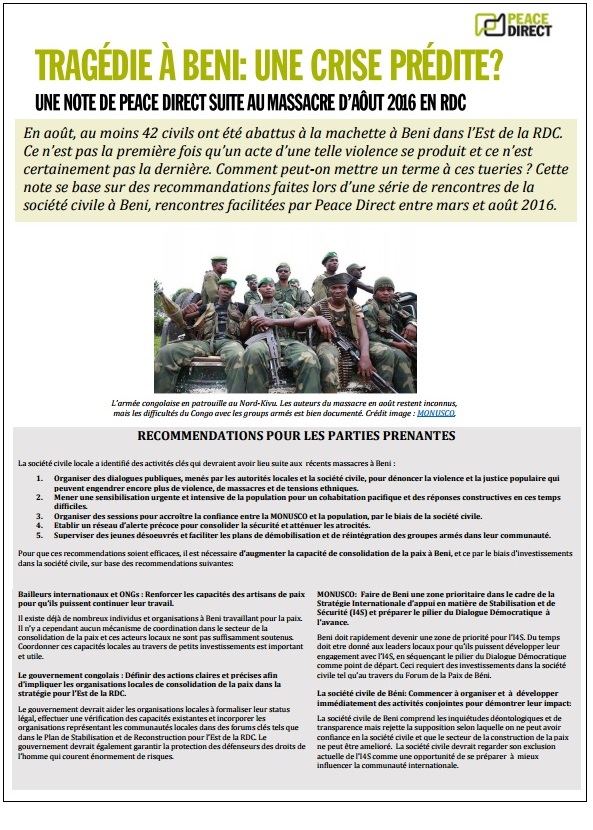
The killings take place amid ongoing instability and endemic armed conflict in the Great Lakes region of central Africa, with a complex and changing picture of violence. But this does not mean that nothing can be done. Peace Direct has spent more than a decade supporting local peacebuilders in Eastern Congo, with notable success in rescuing and reintegrating child soldiers from the type of groups involved in the Beni attacks.
Peace Direct has also advocated for the integration of a civil society strategy into the International Security and Stabilization Strategy for DR Congo, which attempts to co-ordinate much of the international community. The results of all this work feed into the steps identified in this paper, which can contribute to local peacebuilders better influencing events in Beni and the surrounding region. This will not be quick or easy, but we know that there is enormous potential within already-existing civil society to mitigate, respond to and ultimately prevent further atrocities.
Click on the pictures below to view the report in English and French.




